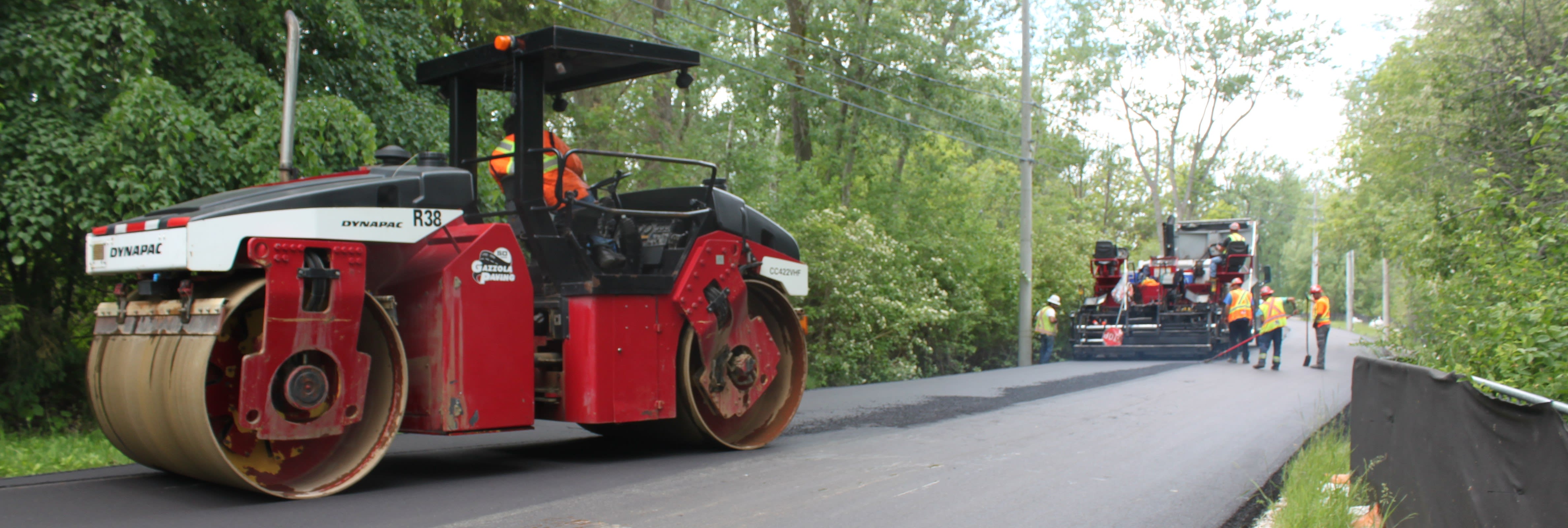- Our Locations
- (416) 675-7007 Office
- (416) 675-7245 Plant

Gazzola Paving Limited prides itself on being agile and able to respond quickly to almost any request within our paving, asphalt production, aggregate sales, and winter maintenance services.
Visible damage to the pavement is commonly referred to as “surface distresses”, some examples of surface distresses are:
These are due to traffic loading, weather conditions and the material used in construction.
Flexible pavement has an asphalt surface course, whereas rigid has a concrete surface course. Flexible pavement has greater load distribution between layers. In rigid pavement, the concrete layer takes most of the load, due to its high flexural strength. Flexible pavement has a low initial cost and easy to repair, and rigid pavement more expensive to install.
A tack coat is a thin layer of asphalt emulsion applied between layers of Hot Mix Asphalt to achieve a strong bond.
Cold milling is the removal of old Hot Mix Asphalt before an overlay. This removes surface distresses and high spots, resulting in a level surface.
Crack sealing is used to fill cracks that form in the surface of the pavement to stop water from entering the base course and subgrade course layers.
Micro-milling is a new technology that is similar to traditional milling, except it has a greater number of teeth and a closer lacing pattern that results in a smoother finish. It can be used to rehabilitate both asphalt and concrete road surfaces.
Reclaimed Asphalt Pavement is old pavement that is recycled. A pre-determined percentage of RAP can be added to new HMA. The RAP aggregate can be used in place of the virgin aggregate and the RAP asphalt binder is reheated and used in place of a portion of the virgin asphalt binder, which lowers cost and reduces waste.
We have a variety of different mixtures based on the client's needs. Our most common mix types are Superpave 19.0mm, 12.5mm, 12.5mm FC1, 12.5mm FC2, HL 1, HL 3, HL 3 Fine, HL 3 High Stability, HL 8, HDBC and Stone Mastic Asphalt (SMA).
Due to the effects of repetitive traffic loading and the environment, it will cause the structure to deteriorate over time. Maintenance and rehabilitation will slow the process down or restore the pavement to good condition. Preventive maintenance is cheaper than rehabilitation.
From paving, grinding, grading, curb and sidewalk installation, gravel and stone, to winter road maintenance, we work alongside large scale commercial and residential partners across Southern Ontario.
Contact Us